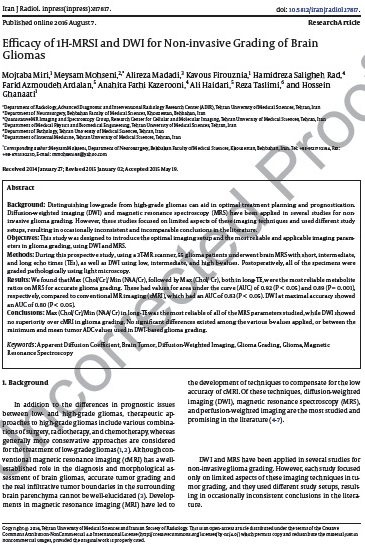Efficacy of 1H-MRSI and DWI for Non-invasive Grading of Brain Gliomas
Abstract
Background: Distinguishing low-grade from high-grade gliomas can aid in optimal treatment planning and prognostication. Diffusion-weighted imaging (DWI) and magnetic resonance spectroscopy (MRS) have been applied in several studies for noninvasive glioma grading. However, these studies focused on limited aspects of these imaging techniques and used different study setups, resulting in occasionally inconsistent and incomparable conclusions in the literature .
Results:
We found that Max (Chol/Cr)/ Min (NAA/Cr), followed by Max (Chol/ Cr), both in long-TE, were the most reliable metabolite ratios on MRS for accurate glioma grading. These had values for area under the curve (AUC) of 0.92 (P < 0.05) and 0.89 (P = 0.001), respectively, compared to conventional MR imaging (cMRI), which had an AUC of 0.83 (P < 0.05). DWI at maximal accuracy showed an AUC of 0.80 (P < 0.05).
Conclusion:
Max (Chol/Cr)/Min (NAA/Cr) in long-TE was the most reliable of all of the MRS parameters studied, while DWI showed no superiority over cMRI in glioma grading. No significant differences existed among the various b-values applied, or between the minimum and mean tumor ADC values used in DWI-based glioma grading .

